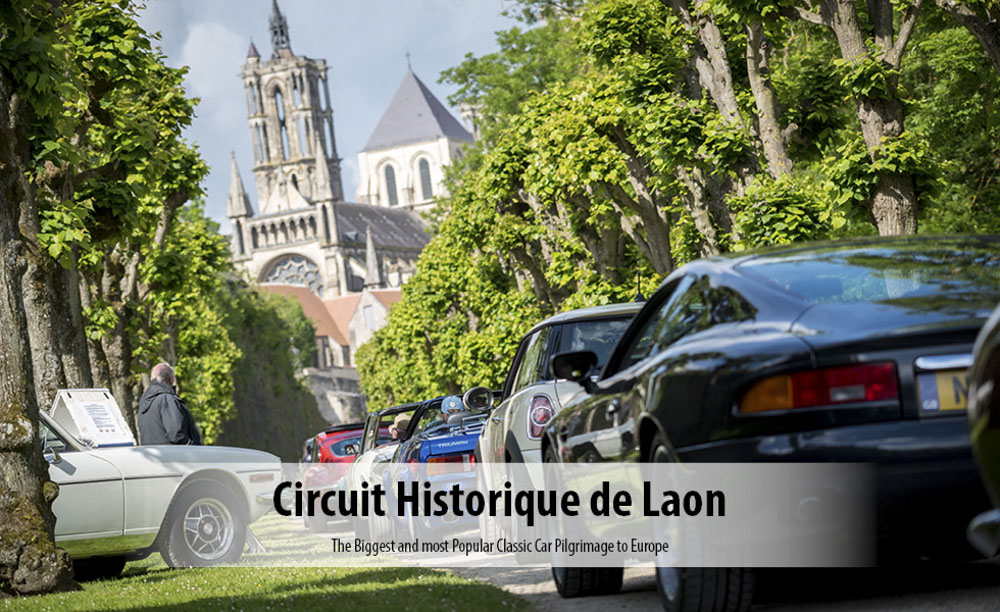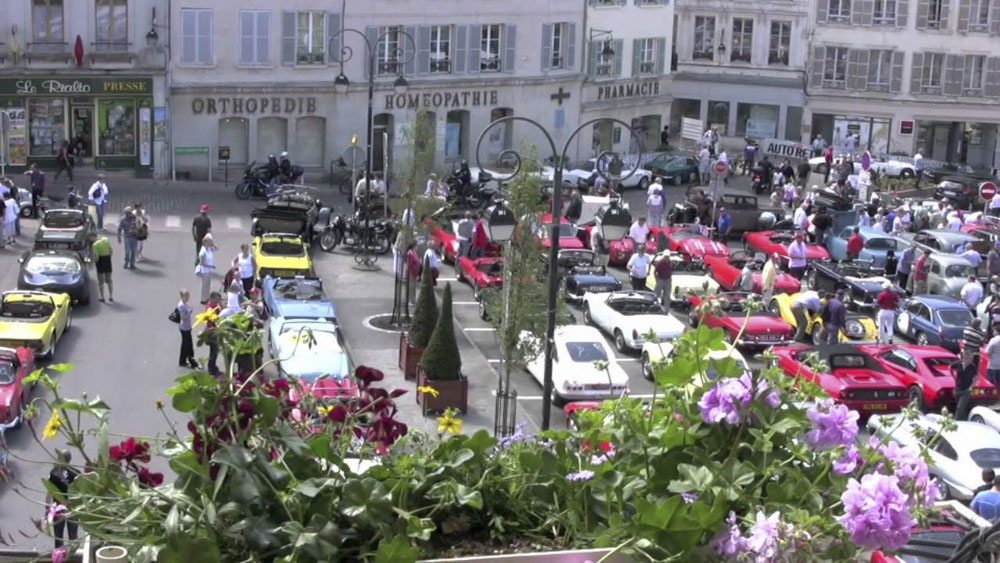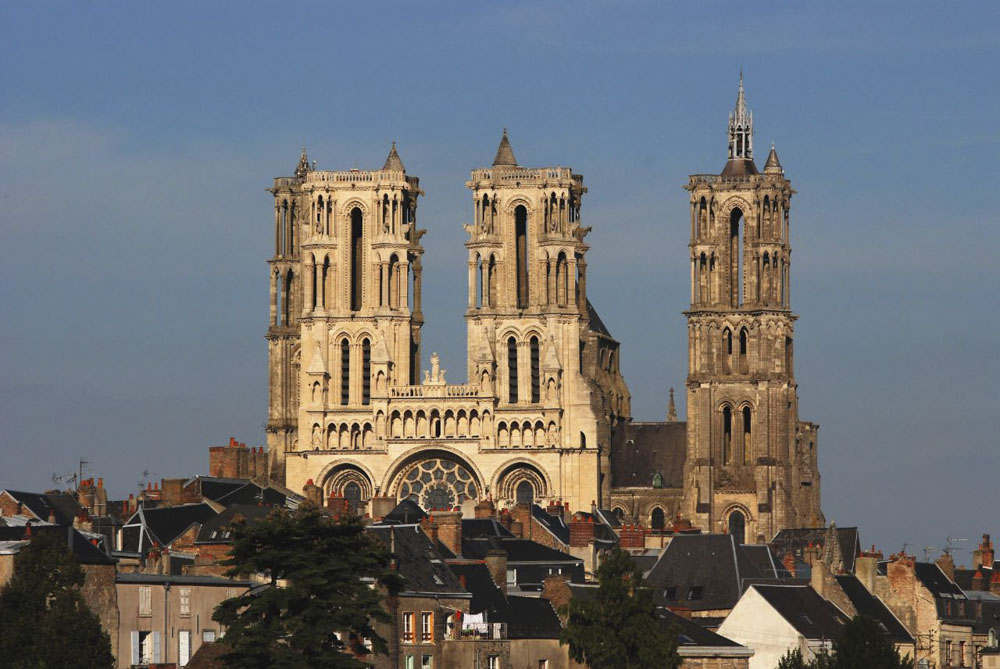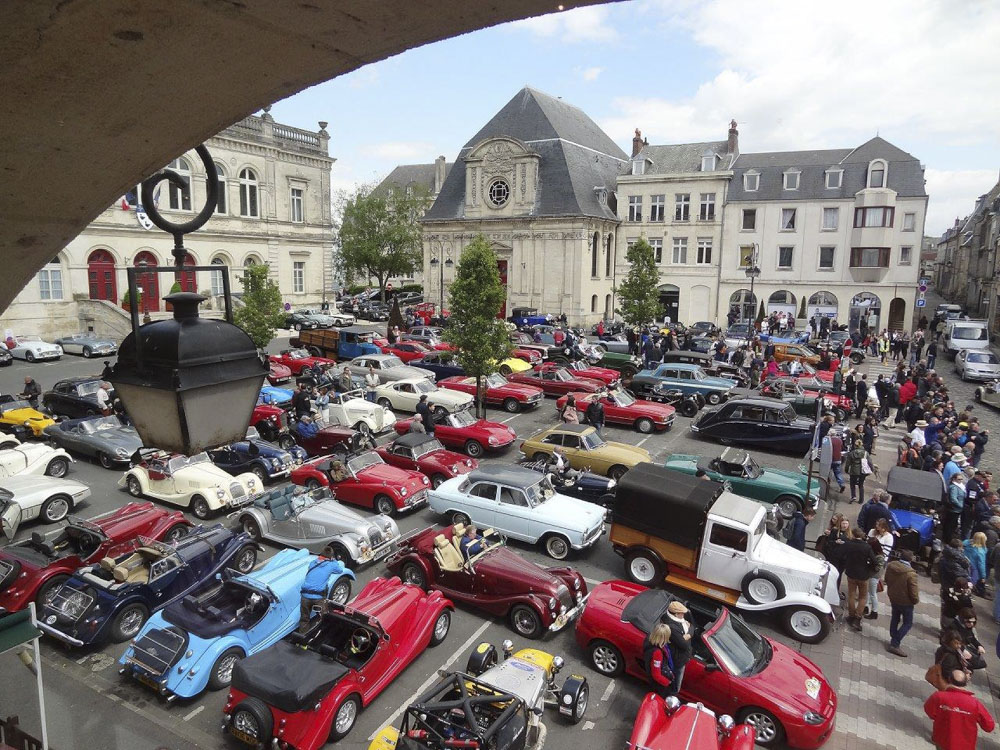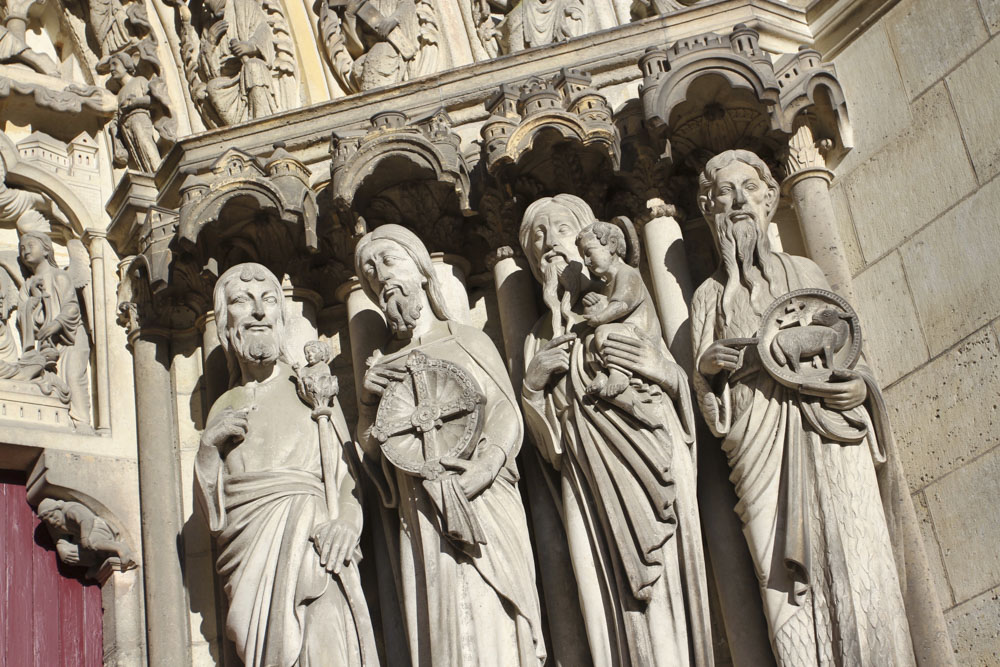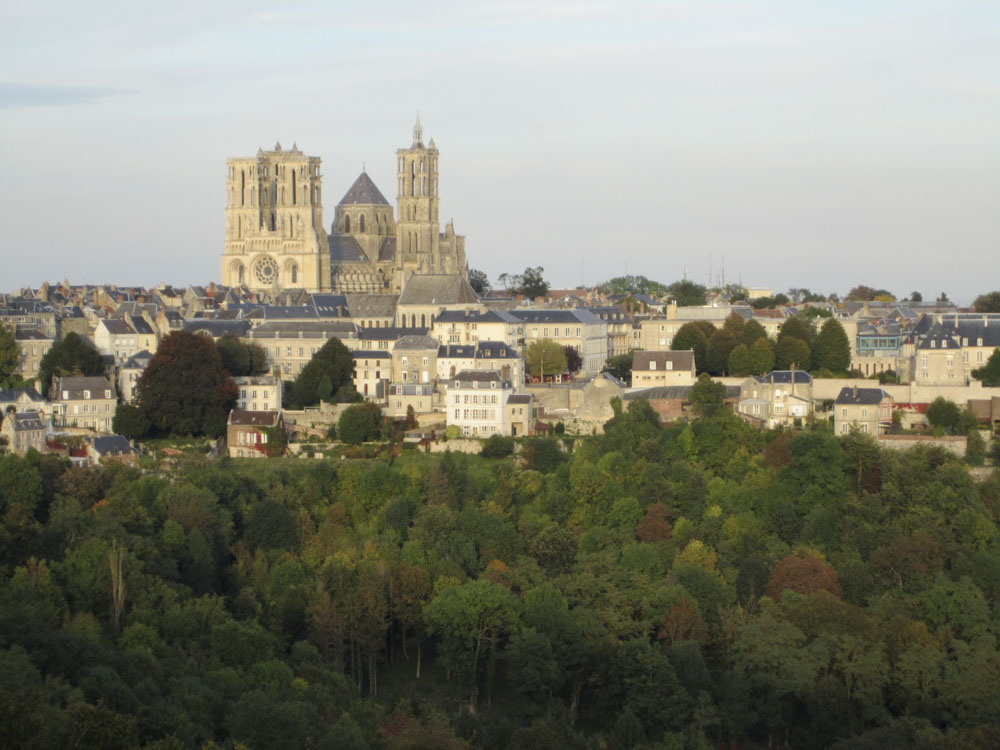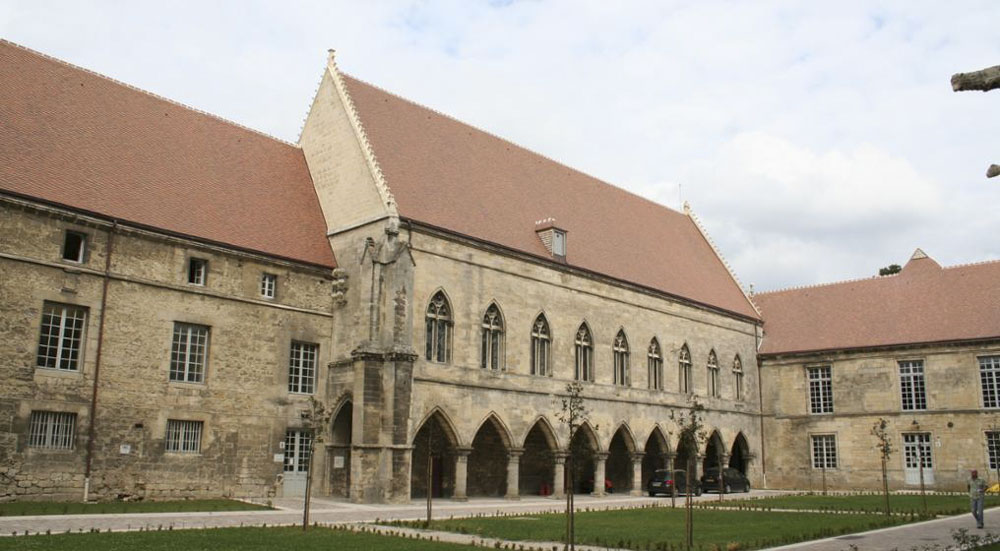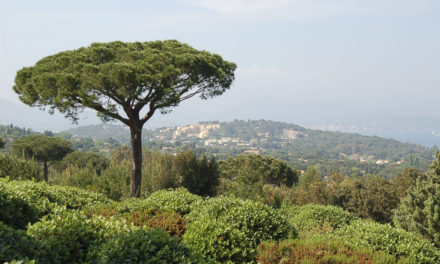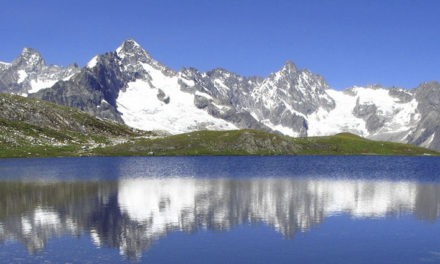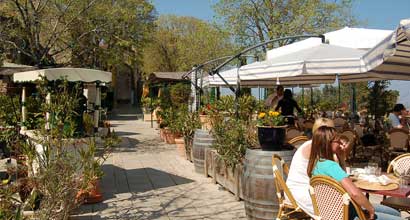Laon is the capital city of Aisne department in Picardy, northern France, between Saint-Quentin and Reims. Perched on a rocky hill, known as an ‘outlier’, the oldest part of the city (the upper town), looks down from a height of 100 metres over the plains of Champagne and Picardy below. The narrow plateau on which the city was built is mostly made of sand, clay and limestone which were ready sources of building materials for the development of the town and a source of underground quarrying. The walled city was built on this sedimentary base in the second part of the 12th century and a magnificent cathedral sits on the top of the hill dominating the view. Laon is divided into two districts (the upper town and the lower town) and a cable car called the Poma links the two. There are approximately 30,000 residents in the city who are known locally as the Laonnois (pronounced ‘Lanoi’).
Book a Hotel in Laon
History
The upper town was probably first settled in 3000 BC but little is known of this period and permanent occupation began only in the first century when the Romans occupied the area. A native of the Laon area, St. Remigius, the archbishop of Reims, brought Christianity to the city and elevated it to the rank of bishopric. From then on Laon was one of the principal towns of the kingdom of France. Laon was already a fortified town in the late Roman period and its ramparts were reconstructed during the Carolingian period. Bertrada of Laon was the mother of Charlemagne and this gave a special status to the city. In 1150 the cathedral was burnt down and replaced by a huge Gothic cathedral and no less than 3 abbeys, 16 churches and the Royal Palace were built during this time.
The commune of Laon has always held a strategic advantage and its history is one of the richest and most varied in France. The city experienced a dramatic development in the late 11th century and reached a population of 10,000 people. However, due to the frequent absence of the king, the local bourgeoisie led a revolt to oppose the rule of the church. In 1112 the people caused the destruction of the episcopal palace and the cathedral and the power shifted from the bishop to the local priests. During the 100 Years’ War many monuments were destroyed but they were rebuilt in a Renaissance style.
The 12th century saw a major economic boom resulting in an intense activity of building and reconstruction and many of the ecclesiastical historic places of interest were created during this time. The town suffered damage from the Prussian War in 1870 and both World Wars saw destruction throughout the city. The American and NATO Armed Forces were stationed at Laon from the beginning of World War II to the closure of the airbase in 1967.
Laon has a long history of turmoil but now it is a quiet place off the beaten tracks with a high density of medieval monuments for such a small community which are well preserved and make an interesting trip. The city is classified as a City of Art and History and there are 68 buildings listed in the Register of Historical Monuments including the famous Cathedral and the 11th century ramparts which are amongst the finest antiquity sites in Europe.
Attractions
There is plenty to see in the historic old town of Laon which is full of interesting medieval buildings, the most fascinating being the Cathedral which was constructed around 1160. Cathédral Notre-Dame de Laon has been listed among the Monuments Historiques since 1840 and is one of the finest examples of 12th and 13th century Gothic cathedrals in France and, unusually, has 6 towers. The architecture of the chapter house and cloister are particularly special and the two towers by the entrance are ornately decorated with stone carvings. Statues of oxen decorate the top of the façade as a tribute to the animals that provided so much labour during the construction of the church. The brightly coloured stained glass windows are a masterpiece of design and the interior, reinforced with white stone, gives the cathedral a unique luminous quality.
The old Episcopal Palace, adjacent to the Cathedral is now the Palace of Justice, and the 12th century Hôtel-Dieu nearby is one of the oldest hospitals in France with a Gothic-style underground Great Hall and a lower room called ‘the Passants’ which have been carefully preserved. Saint Martin’s Abbey was badly damaged by fire during World War II but it has been restored and has a pretty cloister garden in what is now the city library’s courtyard. The Museum has collections of sculpture and paintings and includes a section dedicated to pre-history and Gallo-Roman jewellery. In the garden there is the Templars’ chapel which is now called The Temple to St. John of Jerusalem.
Substantial parts of the original 13th century ramparts are still intact in which you can see impressive gateways such as the Porte des Chenizelles, Porte des Soissons and the Porte d’Ardon which is flanked by pepper pot shaped lookout turrets. There is also an original drawbridge and part of the walk around the walls leads along a tree-lined pathway giving a beautiful view across the town and countryside. The Fôret de Saint-Gobain is a 6,000 hectare forest of oak, beech, birch and poplar trees which stretches across a ridge scarred with quarries and several ponds.
With Laon being built upon limestone quarries, there are underground passageways which are worth a visit. These served as a prison in the Middle Ages and later were used as part of the town’s defence system. The citadel was used as a military headquarters and hospital for German troops during World War I. Beneath the citadel which is now the administrative heart of the city, there are miles of passageways constructed on three different levels and a guided tour takes you down into the bowels of the city.
The Arts House (Maison des Arts) is a cultural centre where exhibitions, theatre and lectures take place on a regular basis. There is a 10 day international film festival in early April and the Fêtes Médiéval de Laon is held in late May. In October there is a series of classical concerts during the Festival de Laon, held either in the cathedral or the Maison des Arts. Le Welcome (next door to the Maison des Arts) has an Irish-style bar and is a good place for meeting friends.
Accommodation & Restaurants
Established in 1685, the Hôtel de la Banniére de France is located just behind the Hotel de Ville in the historic centre of the city. A very traditional old style French hotel, the building is 300 years old and has an excellent gourmet restaurant.
There are several small hotels in the city and B & Bs which are often in interesting 17th and 18th century houses. Most are inexpensive and offer good service with family rooms available throughout the year.
The pedestrianised Rue Châtelaine, in the ville haute (upper town) has an impressive selection of wine shops, boulangeries and fromageries and there are a good selection of cafés in which to pause and enjoy an inexpensive meal. Le Parvis which overlooks the west front of the cathedral, the Créperie Agora, La Bonne Heure and the lively Brasserie Chenizelles are all good value establishments serving traditional French food.
La Petite Auberge famously serving gourmet food is in the ville basse (lower town) and is well known for its fine dining and excellent wine list. Next door, the Saint-Amour bistro offers good food in a less formal atmosphere.
Pâvé de Laon, sweet pastilles, are a local delicacy.
Transport
The Poma 2000 is an automated municipal cable car transport system with 3 stations which opened in 1989 replacing a former rail tram line.
Laon is easily accessible by road: N2 Paris to Brussels, and the A26.
Trains run from Paris’s Gare du Nord to Laon at least 15 times a day.
Tourist Office
Tourist Office Country of Laon – Hotel Dieu, Place du Parvis Walter of Mortagne – 02000 Laon – France
Phone: (+33) 3 23 20 28 62

